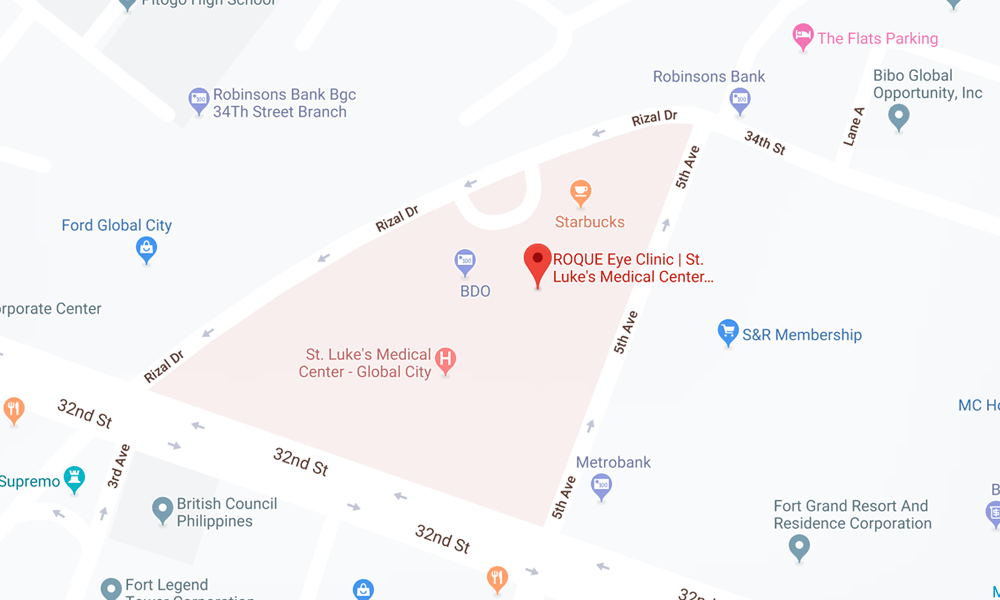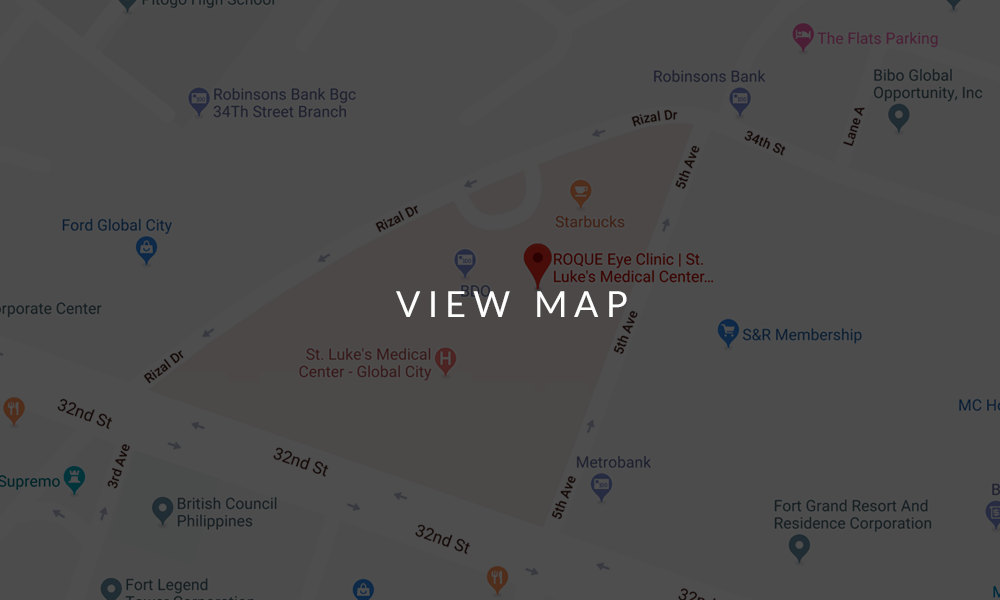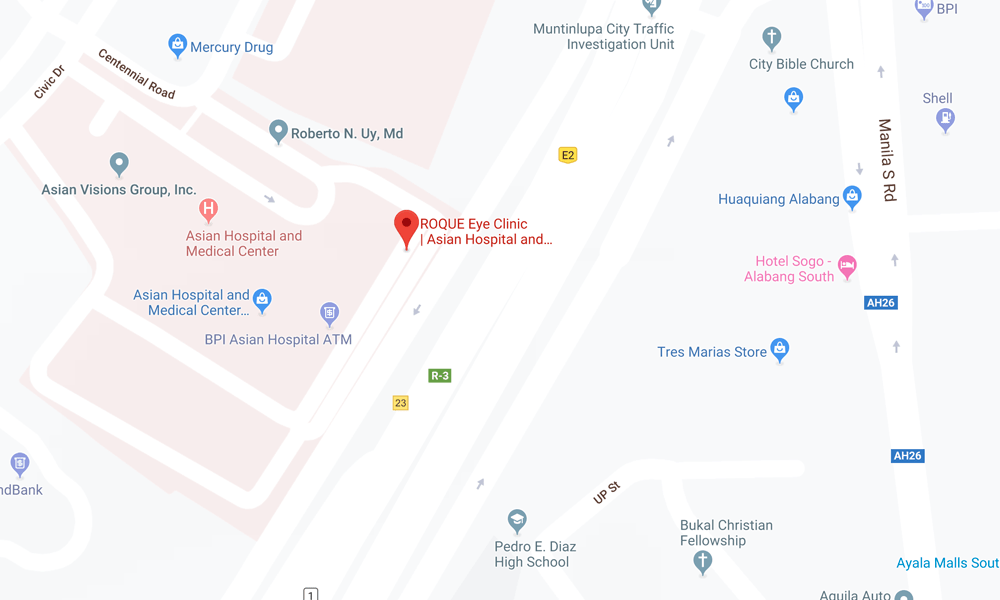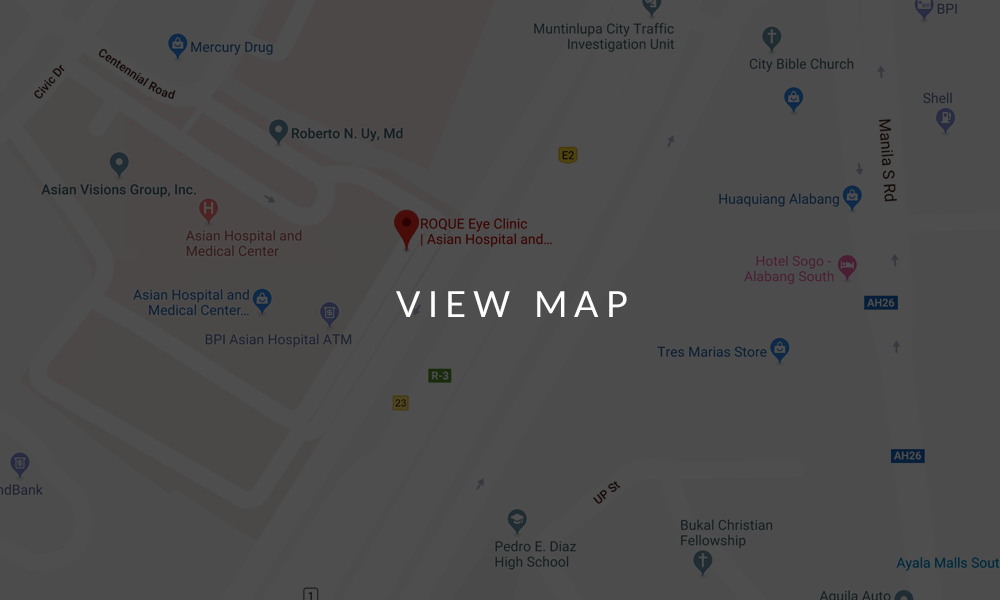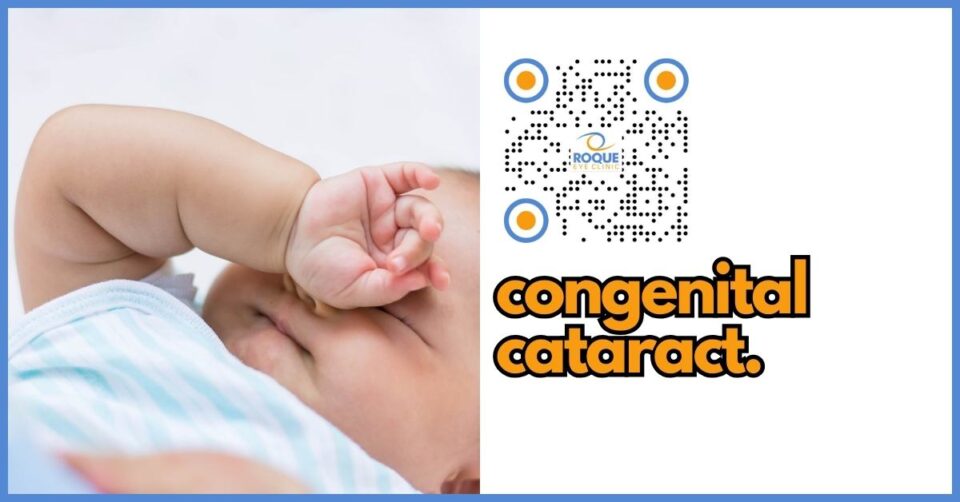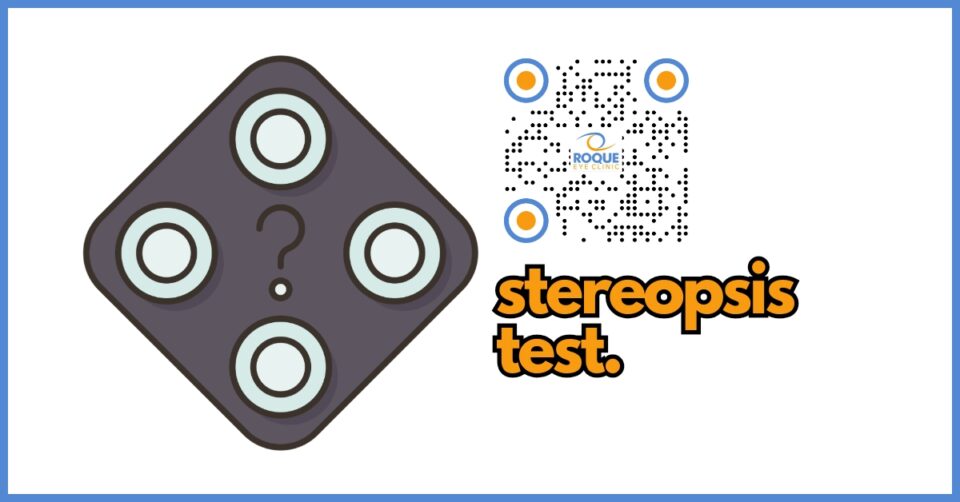DUANE RETRACTION SYNDROME
Duane Retraction Syndrome
Duane retraction syndrome is a congenital cranial dysinnervation disorder that may occur in isolation, or sometimes in association with other congenital anomalies (Goldenhar, Moebius, Morning Glory). It affects more females than males.
Isolated cases are mostly sporadic and unilateral, the left eye is more frequently affected. A minority of the isolated cases are inherited (autosomal dominant and autosomal recessive).
It is theorized that the clinical presentation of this syndrome stems from the congenital absence of the cranial nerve 6 nucleus, and cranial nerve 3 nucleus sends an aberrant branch to the lateral rectus.
The diagnosis is based on clinical findings. The esotropic type presents with esotropia in primary gaze and a face turn towards the affected eye. The exotropic type presents with exotropia in primary gaze and face turn away from from the affected eye. The clinical type may be straight, esotropic or exotropic in primary position and with a face turn to the affected side, and with severe adduction deficit. Any type may be associated with globe retraction, upshoot or downshoot, and lid changes. Orbital imaging is not always required but may be helpful in visualizing the orbital anatomy.
Molecular genetic testing for CHN1 gene (autosomal dominant) is available and is recommended only for the familial cases.
Surgical indications include significant head turn, deviation in primary gaze, and globe retraction. Eye muscle surgery may involve recession of either medial or lateral rectus, Y split of the lateral rectus to address significant upshoots and downshoots, or vertical rectus transposition to improve abduction. Surgery may be staged, depending on the severity of the case.
- Doyle, J., and Hunter G. (2019). Transposition procedures in Duane retraction syndrome. J AAPOS, 23(1): 5-14.
- Velez, F., Velez, G., Hendler, K, and Pineles, S. (2012). Isolated Y-splitting and recession of the lateral rectus muscle in patients with exo-Duane syndrome. Strabismus, 20(3): 109-114.
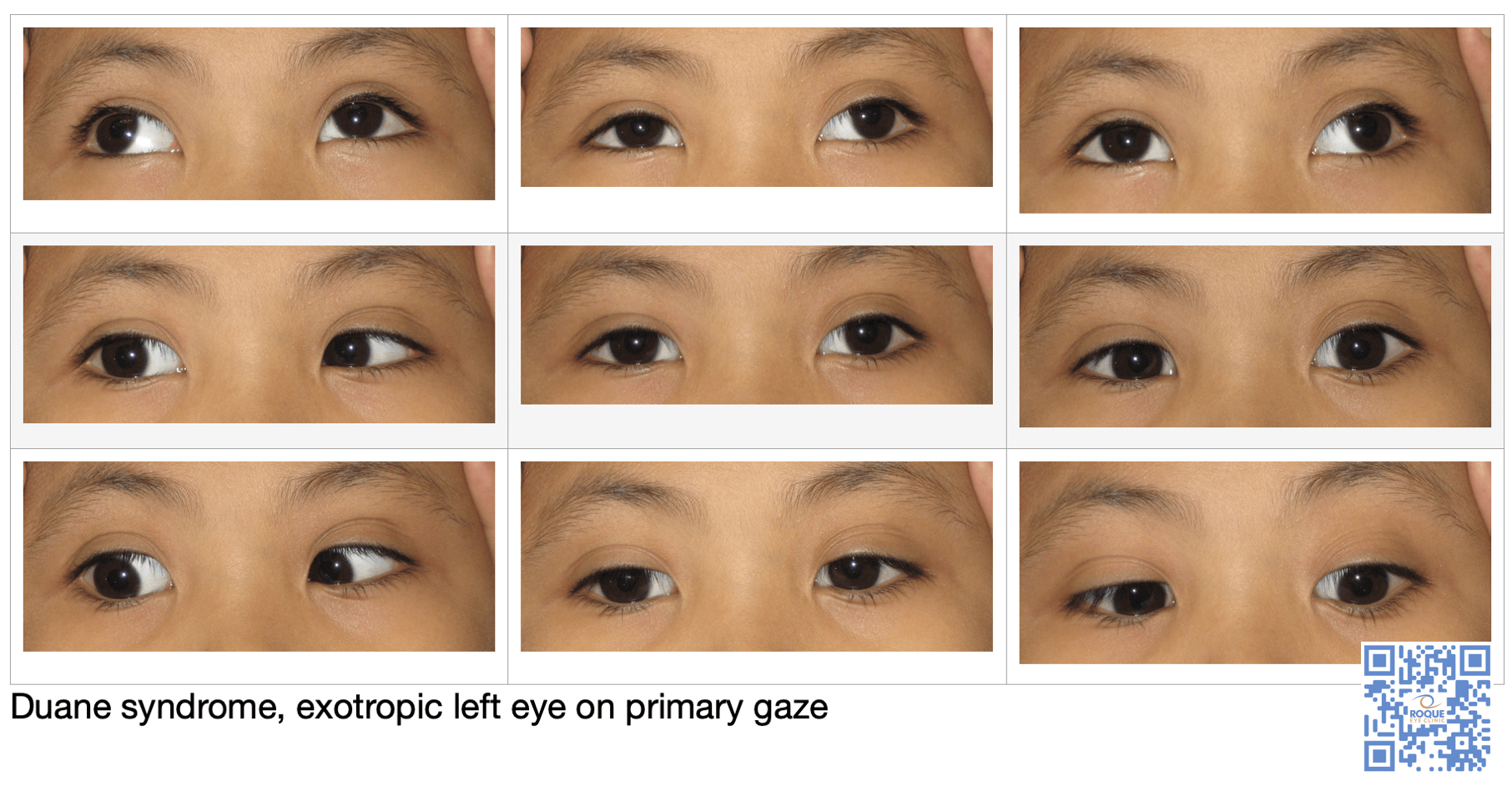
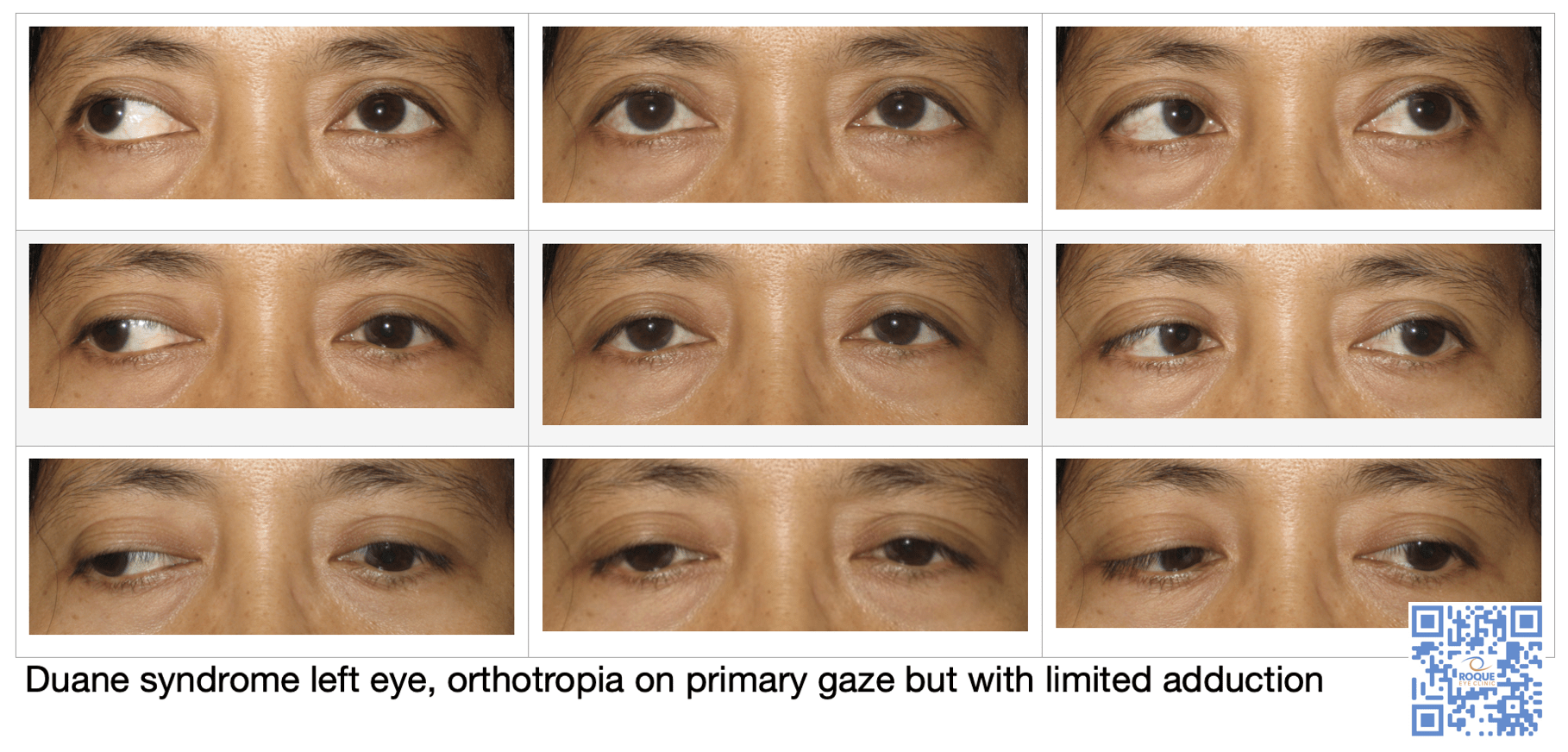
BOOK AN APPOINTMENT
It takes less than 5 minutes to complete your online booking. Alternatively, you may call our BGC Clinic, or our Alabang Clinic for assistance.
OUR SPECIALIST
DR. BARBARA ROQUE
MD, DPBO, FPAO, FPCS
Dr. Barbara Roque is a specialist in pediatric ophthalmology, adult strabismus, and ophthalmic genetics. Her private practice began in 2006, after her post-graduate fellowship training at The Children’s Hospital in Westmead, University of Sydney System, Australia. Her patients are mostly children with ocular disease, refractive errors, cataracts, and eye misalignment.
OUR CLINICS
BGC CLINIC
- ST. LUKE'S MEDICAL CENTER GLOBAL CITY
2/F Medical Arts Building 217
Rizal Drive corner 5th Avenue
Bonifacio Global City, Taguig 1634
Philippines
SLMC CLINIC HOURS
- 9am - 12pm
Appointments only
ALABANG CLINIC
- ASIAN HOSPITAL AND MEDICAL CENTER
5/F Medical Office Building 509
2205 Civic Drive, Filinvest City
Alabang, Muntinlupa 1781
Philippines
AHMC CLINIC HOURS
- 1pm - 4pm
Appointments only
BOOK AN APPOINTMENT
It takes less than 5 minutes to complete your online booking. Alternatively, you may call our BGC Clinic, or our Alabang Clinic for assistance.






